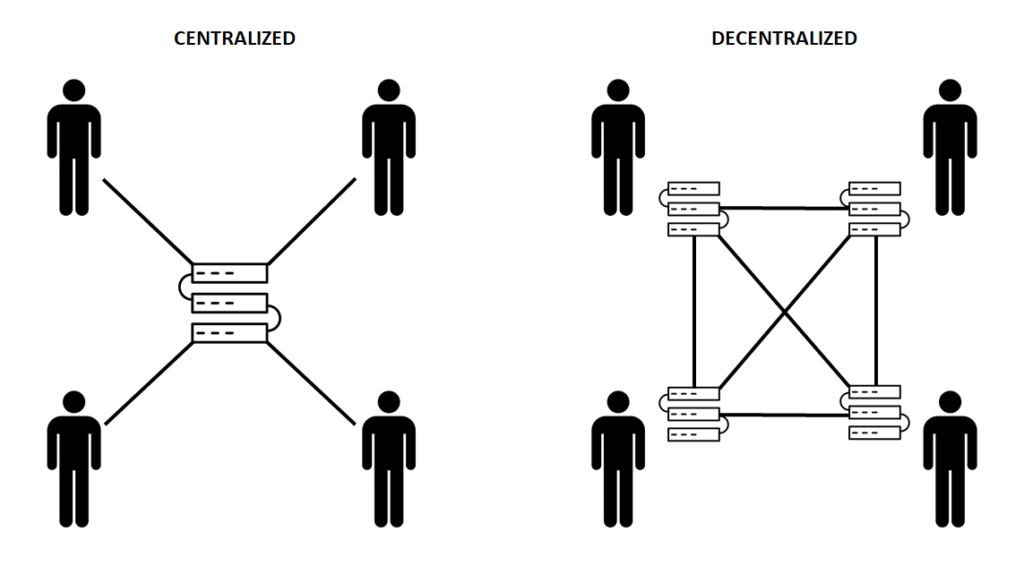
Bitcoin is a decentralized digital currency that uses peer-to-peer technology to operate without the need for intermediaries. Simply said, bitcoin offers you to transact with others without a central bank or other authority.
Bitcoin was created in 2009 by the mysterious Satoshi Nakamoto who described his ideas in a whitepaper titled Bitcoin: A Peer-to-Peer Electronic Cash System. In the paper, he described Bitcoin as electronic cash that would allow online payments to be sent directly from one party to another. The most famous transaction made with Bitcoin, and the first commercial use with an actual company is the purchase of two pizzas at Papa John’s pizza for 10,000 BTC.
May 22nd is known as Bitcoin Pizza Day celebrating the first purchase of pizza with cryptocurrency.

With the current price of Bitcoin of nearly $46,000, those two pizzas would be worth around 460 million dollars. That shows how high the appreciation of Bitcoin was over the past decade. But why did it appreciate so much?
Table of Contents
What differentiates Bitcoin from other forms of money?
There are three main differentiations when it comes to Bitcoin and our common forms of money:
Decentralization
Fiat currencies (such as the dollar, euro, yen, etc.) are issued by the government and regulated by the central bank. Bitcoin on the other hand has a decentralized system that records transactions in a distributed ledger called a blockchain. Because of blockchain technology governments have no control over Bitcoin, hence do not have to rely on trust. Understanding the trust factor is key for understanding how the financial system works so I would recommend you to read the following topic: Importance of the trust for cryptocurrency adoption.

Supply
You’ve probably heard of the term inflation, which basically means our money is becoming worth less over time. The reason behind inflation is the increase in the money supply, or in other words, the government printing money. Bitcoin has a limited supply of 21 million bitcoins. No authority can produce more than 21 million bitcoins which makes it the hardest money in the financial system.
Exchange
Bitcoin exists only in a digital form, hence there is no physical coin to transact with. The means of exchange are purely digital and require an internet connection to be processed as opposed to fiat currencies which you can physically hold and trade.
How Bitcoin works?

When it comes to the functionality of Bitcoin, there are three key components that make Bitcoin unique:
Blockchain technology
Blockchain is a digital ledger that records transactional data. It is a database that collects transactional information and stores it into blocks. Each block has a designed size, in Bitcoin’s case it’s 1 Megabyte and each new block is connected to the last one creating chains of blocks. This technology enables Bitcoin to have a transparent ledger. Basically, anyone can see transactions made on the blockchain. Databases hold information in the computer, usually under one roof and one central authority. With blockchain, there are lots of computers in different locations controlled by different individuals. These computers that create Bitcoin’s network are called nodes and they validate transactions before adding them to the chain.
Proof of work (PoW)
Proof of work is the algorithm whose main task is to secure the network. When a block of transactions is being added to the ledger, the node (computer in the network) has to expend processing power on solving complicated mathematical problems whose correct solution is easy to verify. This secures the network from double-spending or other fraud attempts.
In 1997 Proof of work system Hashcash was proposed as a way of protection against spam emails.
Peer-to-peer network
P2P or Peer to Peer is a network structure in which computer systems are connected to each other and have the same obligations and privileges. The most known example is BitTorrent, a protocol for online file sharing in which users download files directly from each other. In Bitcoin’s case, members share the ledger of all Bitcoin transactions which is crucial for decentralization.
Conclusion
Bitcoin is truly a revolutionary technology but we are yet to see how will it evolve in the years to come. Decentralization will probably be one of the main characteristics of future technologies. In that sense, the rise of Bitcoin has opened the possibility for other cryptocurrencies to achieve greater popularity and implement their solutions in our society. Don’t forget that Bitcoin is only slightly older than a decade which makes it a very young asset from which we will surely see a lot more.


